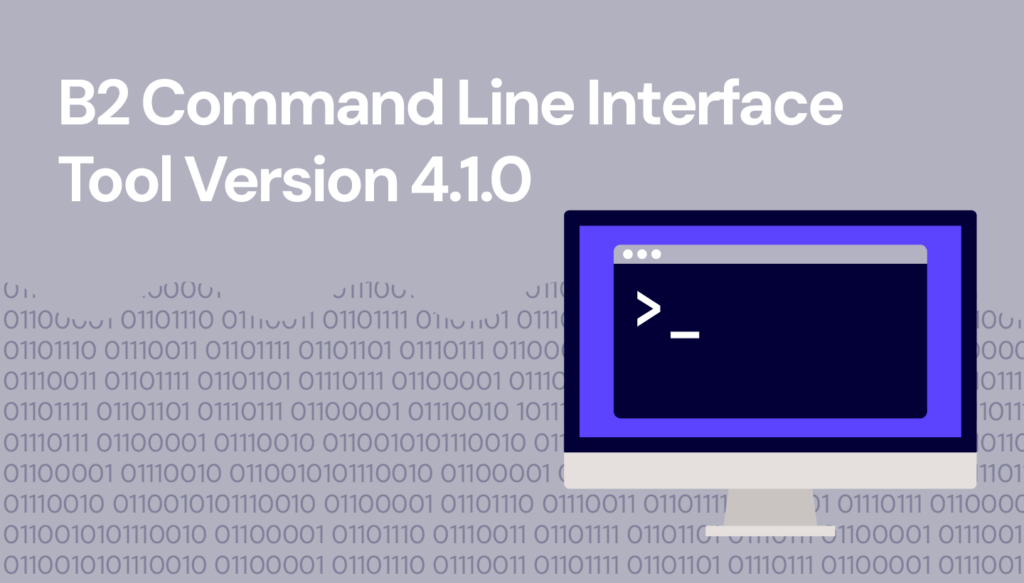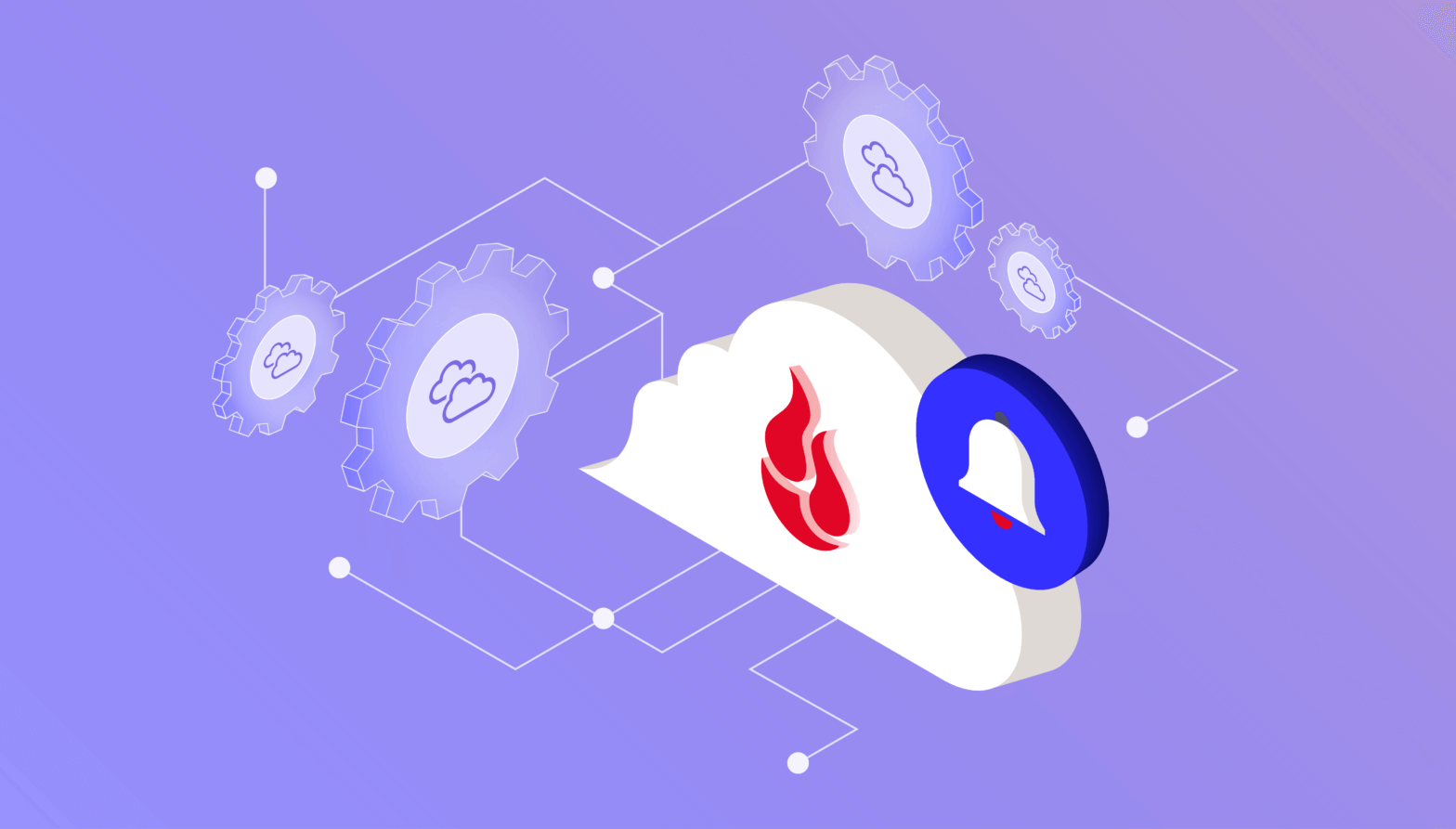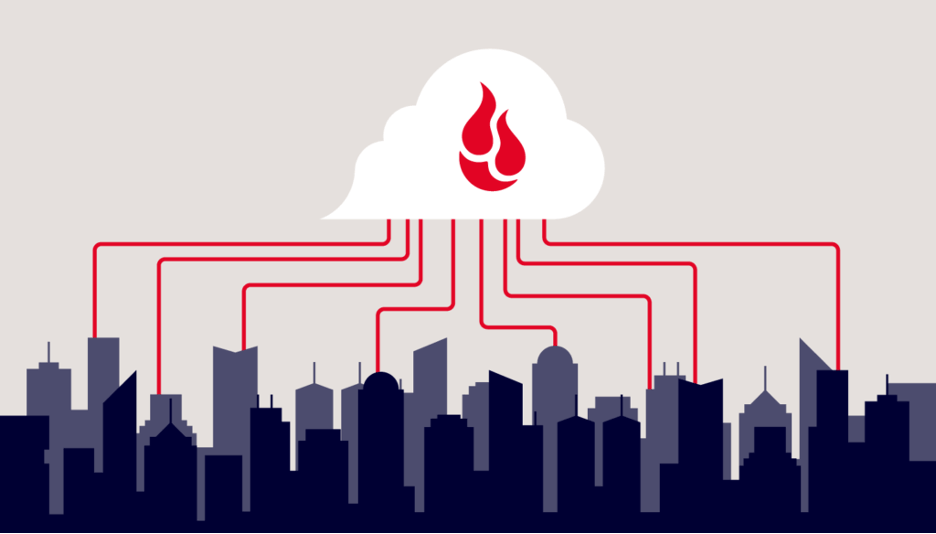
The tools you use impact your efficiency, productivity, and the quality of your work. That’s true whether you’re a carpenter looking for the best saw blades, a chef choosing high-quality knives, or a developer or programmer investing in top-notch software. The B2 Command Line Interface (CLI) is one tool that you can use to interact with B2 Cloud Storage, and some recent improvements make it a more powerful, intuitive part of your arsenal.
It’s been a while since our last blog about the Backblaze B2 Command Line Tool (B2 CLI for short). Today, we’re sharing more details on the key enhancements and new features as part of the B2 CLI version 4.1.0.
Let’s dive into the highlights of these changes and explore how they can elevate your B2 CLI experience.
User experience enhancements
1. A new nested command structure
Gone are the days of sifting through a long list of commands to find what you need. The B2 command structure has been revamped to be more intuitive and organized. With the new nested command structure, related commands are logically grouped together. The new structure looks like b2 <resource>. It makes it easier for you to locate and utilize the functionality you require. Whether you’re managing files, buckets, keys, or accounts, commands are now categorized in a way that aligns with their functions. This gives you a clearer and more concise enhanced user experience.

2. Streamlined ls and rm commands
Why use two when one will do? The b2 ls and b2 rm commands can now accept a single cohesive string, B2 URI (e.g., b2://bucketName/path), instead of two separate positional arguments, giving you enhanced consistency and usability. It simplifies the command syntax and reduces potential for errors by eliminating the chance of misplacing or mistyping one of the separate arguments. And it ensures that the bucket and file path are always correctly associated with each other. This change minimizes confusion and helps to avoid common mistakes that can occur with multiple arguments.
In addition, some commands, such as b2 file large parts, accept a B2 ID URI (e.g. b2id://4_zf1f51fb…), which specifies a file by its unique identifier (a.k.a. Fguid).
Some redundant commands have also been deprecated with the introduction of the B2 and B2 URIs. For example: download-file-by-id and download-file-by-name functionality is available through b2 file download b2://bucketname/path and b2 file download b2id://fileid command.
3. Enhanced credential management
To enhance security and performance, the CLI will no longer persist credentials on disk if they are passed through B2_* environment variables (that is, B2_application_key_id and B2_application_key). This reduces the risk of unauthorized access to your credentials and improves the overall security of your environment.
At the same time, it’s important that security is balanced with performance. To address this, you can persist your credentials to local cache and can continue using local cache for better performance. You can explicitly choose to persist your credentials by using the b2 account authorize command.
By eliminating the automatic persistence of credentials from environment variables and providing a clear method to manage local caching, you now have a balanced approach that keeps your data secure while ensuring efficient CLI operations.
4. Transition to kebab-case flags
Previously CLI flags had mixed camelCase and kebab-case styles. Users needed to remember the style to use it along with the name for the option. But kebab-case, where words are separated by hyphens (e.g., --my-flag), offers a clearer and more straightforward way to read and interpret flags. We’ve transitioned all CLI flags to --kebab-case. This style not only enhances readability, making it easier to understand complex commands at a glance, but also makes it easy to remember. It’s particularly beneficial when flags are composed of multiple words, as it reduces visual clutter and makes the flag names more accessible.
5. Simplified listing with ls
Ever wondered how to list all your buckets in one go? Now, you can call b2 ls without any arguments to do this. Whether you’re managing multiple buckets or just need a quick overview of your entire bucket inventory, the ability to list all buckets with a single command saves you time and effort. The enhancement to the b2 ls command is all about making your life easier. (As an aside, it’s also the quickest way to check that Backblaze B2 is correctly configured and you’re using the right set of credentials.)
6. Handy aliases for common flags
Why go the long way when you can take shortcuts? You can now use -r as an alias for the --recursive argument and -q for the --quiet argument. These shortcuts make your command-line interactions quicker and more efficient. You can get things done with fewer presses.
7. Global quiet mode
The --quiet option is now available for all commands, allowing you to suppress all messages printed to stdout and stderr. This is particularly useful for scripting and automation, where you want to minimize output.
8. Autocomplete
This enhancement for the B2 CLI means that you no longer have to remember and type out lengthy command arguments or options manually. As you start typing a command, the CLI will provide you with suggestions for completing the command, options, and arguments based on the context of your input. This can significantly save up your time and help you avoid typos or incorrect entries.
New features to boost your productivity
In addition to the CLI enhancements, we’ve also recently announced a few new features and capabilities for Backblaze B2, including:
- Event Notifications: Event Notifications helps you automate workflows and integrate Backblaze B2 with other tools and systems. You can now manage Event Notification rules through
b2 bucket notification-rulecommands directly from the CLI. The feature is available in public preview. If you’re interested, check out the announcement and sign up here. - Unhide files with ease: Previously, if you needed to reverse the hiding of a file, the process could be cumbersome or require multiple steps. To restore hidden files, using the
b2 file unhidecommand is now as simple as it sounds. You only need to specify the file you want to unhide, and the command will handle the rest. This ensures that you can quickly and accurately restore file visibility without unnecessary complications. Whether you’ve hidden previous backup files and need to access them again, or when reorganizing your storage or adjusting file visibility for different users, or if you unintentionally hide files and need to make them visible for auditing or review purposes, you can use this command swiftly. - Custom file upload timestamps: You can now enable custom file upload timestamps on your account, enabling you to preserve original upload times for your files. This feature is ideal for maintaining accurate records for compliance and reporting, and it gives you greater control over the file metadata. If you’d like to enable the feature, please reach out to Backblaze Support.
In addition to the above highlights, we’ve implemented crucial fixes to improve the stability and reliability of the CLI. We’ve also made several improvements to our documentation, ensuring you have the guidance you need right at your fingertips.
Start using the new features today
The easier we can make your CLI experience, the easier your job becomes and the more you can get out of Backblaze B2. Install or upgrade the B2 CLI today to take advantage of all the new features.
As always, we value your feedback. If you have any thoughts or experiences to share as you start using the new enhancements and features, please let us know in the comments or submit feedback via our Product Portal. Your input is crucial in helping us continue to improve and innovate.
Happy coding, and enjoy the new B2 CLI offerings!




